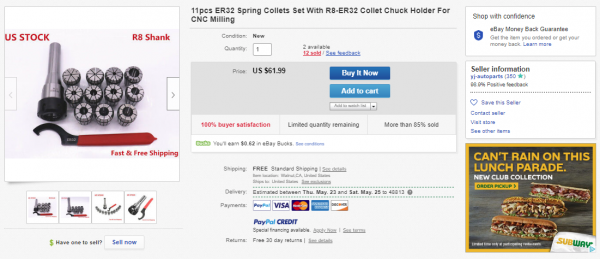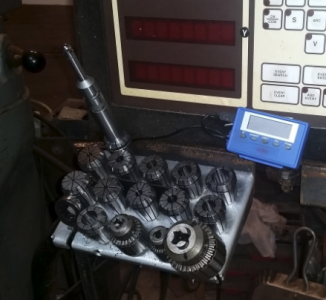- Joined
- May 31, 2018
- Messages
- 184
I’m sure that this has been asked many times before and I’m sure I’ve read up on it a few times but can I find the information I want now?!
As some of you may know from another thread I have recently bought a Bridgeport mill. With it came a few boxes with probably a couple of hundred end mills. Unfortunately though nothing to hold them other than a fee R8 collets.
Now my budget is quite limited just now but I am wanting to get some tool holders for it. I know there are various options from R8 collets, an R8 to ER32 adapter or even some of the quick change variants.
I like the idea of a quick change system but as I said before my budget just now is limited. I don’t however want to invest in one system now just to replace it all down the line.
So my question is, which is the most convenient and / or versatile tool holding solution for a Bridgeport? Are there any trade offs for a quick change system? Presumably rigidity could suffer but is this really a problem given that the R8 collet itself would possibly be the weak link?
Thanks in advance!
As some of you may know from another thread I have recently bought a Bridgeport mill. With it came a few boxes with probably a couple of hundred end mills. Unfortunately though nothing to hold them other than a fee R8 collets.
Now my budget is quite limited just now but I am wanting to get some tool holders for it. I know there are various options from R8 collets, an R8 to ER32 adapter or even some of the quick change variants.
I like the idea of a quick change system but as I said before my budget just now is limited. I don’t however want to invest in one system now just to replace it all down the line.
So my question is, which is the most convenient and / or versatile tool holding solution for a Bridgeport? Are there any trade offs for a quick change system? Presumably rigidity could suffer but is this really a problem given that the R8 collet itself would possibly be the weak link?
Thanks in advance!



